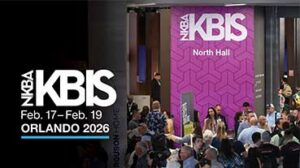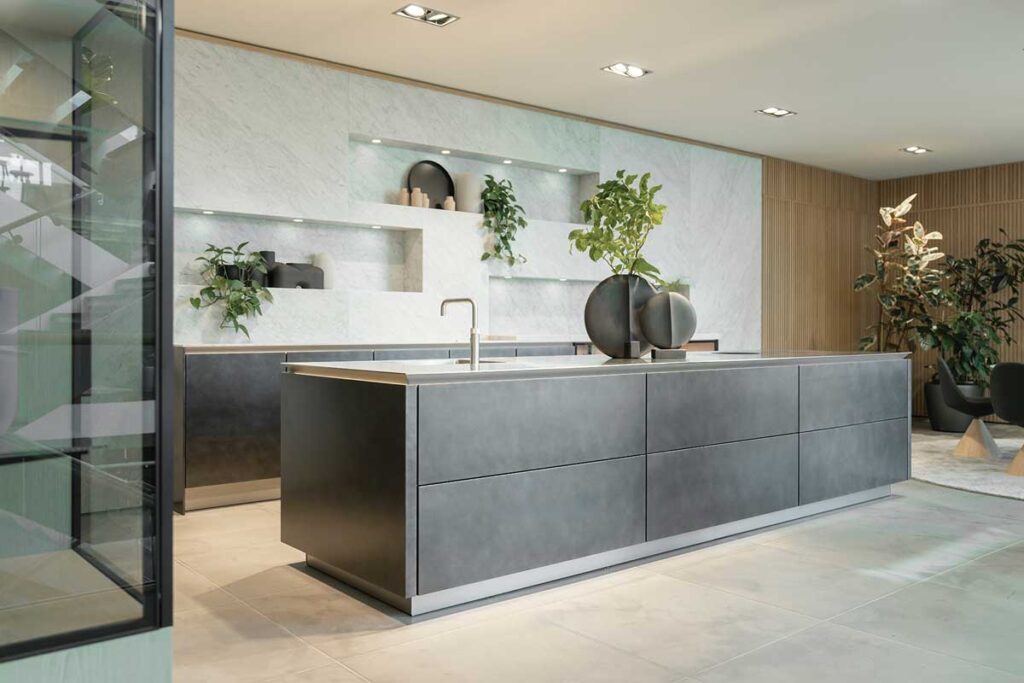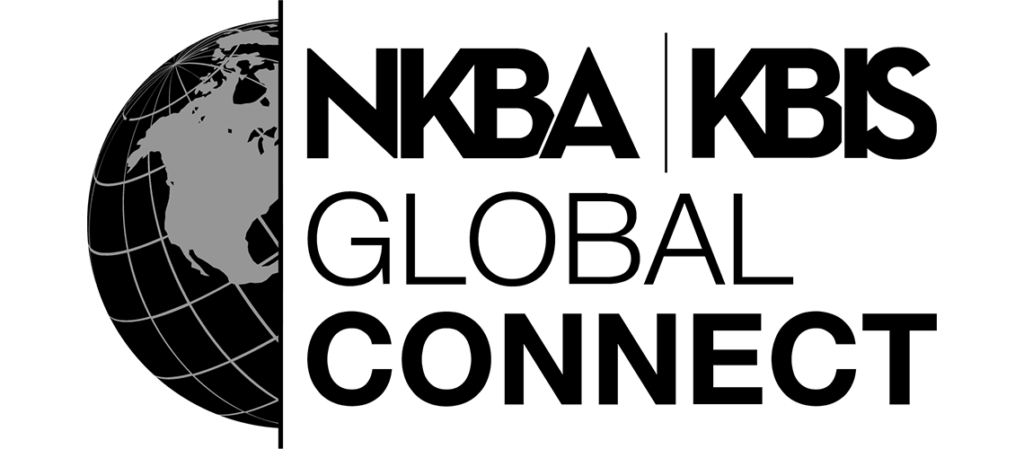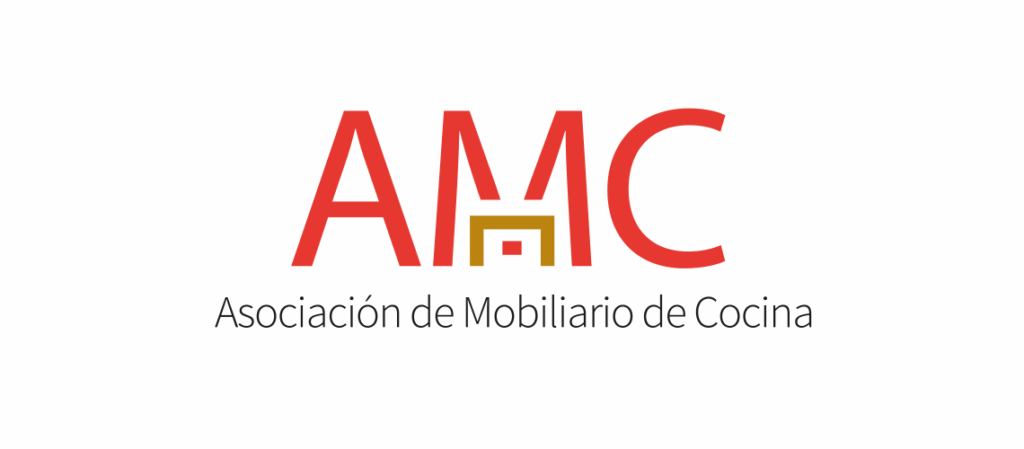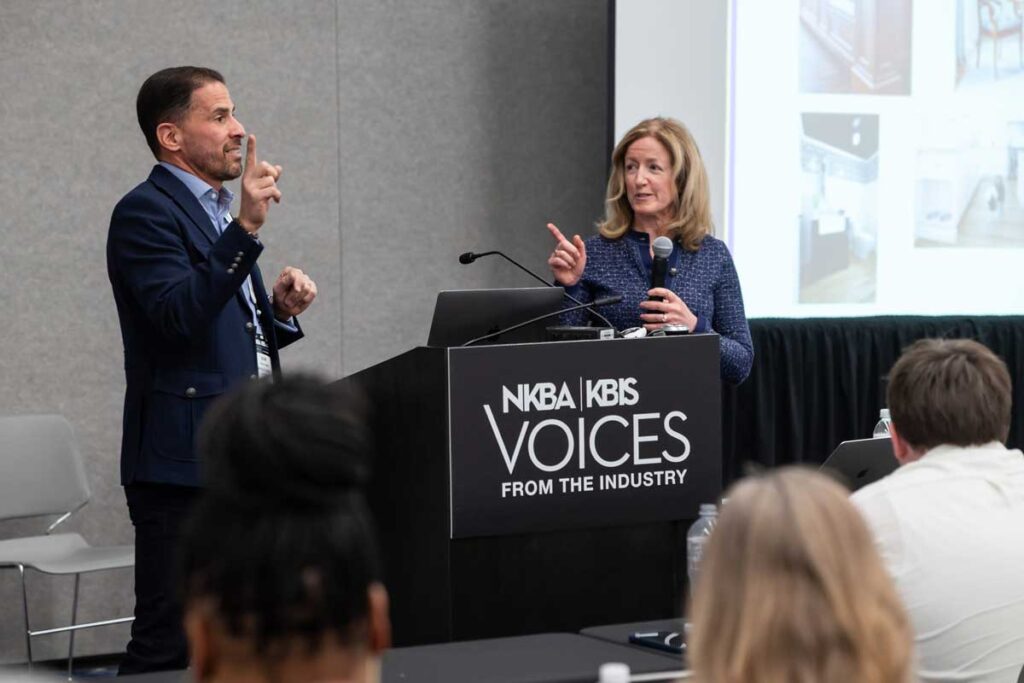As a guest on the New Home Insights Podcast, Episode 97, I had the pleasure of speaking with Dean Wehrli, Principal at John Burns Research and Consulting, about the current state of the kitchen and bath market. Dean manages residential and commercial real estate consulting assignments across the country and specializes in aggregating housing market trends and conducting primary research. The following Q&A is a sample of our conversation and has been edited for length and clarity.
Listen here for the full podcast episode with more on the state of the kitchen and bath industry, sustainability, and design trends.
By Bill Darcy and Dean Wehrli
Dean Wehrli: What are the things that are driving optimism about the kitchen and bath sector?
Bill Darcy: The four things driving optimism are mortgage rates, rising home equity levels, the abundance of homes entering prime remodeling years, and the great transfer of wealth from baby boomers to millennials
- We know that when mortgage rates fall below 5%, you see acceleration in activity. Considering 80% of homeowners with outstanding mortgages are locked in below 5%, there’s not a lot of motivation to leave that home with the low interest rate. This drives homeowners to ask themselves, “how do I make the home I’m living in better?”
- During the pandemic led real estate and remodeling boom, we saw unprecedented K&B activity including these extremely strong levels of home equity we’re still seeing today. And homeowners feel much better investing in that asset when it’s appreciating.
- There are 22 million homes in what we call prime remodeling years, these are aging homes that need repair, replacement, and remodeling, and that number will grow to 24 million by 2027. We are seeing a strong amount of inventory that needs work.
- When you look back at millennials, who graduated with massive debt, and no houses for them to buy, everyone was asking, how do they get out of debt? The baby boomers will leave them an estimated $68 trillion in wealth. That will enable millennials to purchase not only primary homes, but vacation homes. And what will they do with those homes? They will repair and remodel and upgrade those kitchens and baths.
DW: I know you have this connection with the European kitchen and bath world. What’s that initiative?
BD: We started the NKBA Global Connect program with a two-fold goal. One is to help manufacturers around the world who are interested in the North American market, and the other is to bring design trends from America to Europe and vice versa, and also help these domestic manufacturers sell products in other places.
When we talk about our own inflation, we can talk about it humbly compared to what’s going on in Europe. North America is super attractive and appealing, especially to European brands, because of the health of our market. We have a lot of interest, and through KBIS pavilions of different countries – especially those that have aggregated their brands of their market in Germany, in Italy, and the UK – they have said North America has a lot of opportunity for us to sell our products and NKBA is the avenue to help us do that.
DW: Any bold predictions that you want to make about this kitchen and bath space?
BD: Some things I saw at KBIS and we’re hearing from our members and certainly our Design Council, is that neutral colors have taken a bit of a backseat to color. We think that’s here to stay. The healthy living kitchen, including healthy eating and healthy cooking – this is not only a trend – I think this is going to stick around for a while. And then in the bath it’s integrated tech. Everything is controlled and customized by the way the homeowner lives. I think you’re going to continue to see more and more tech as they scale towards the mid-market especially.
DW: This trending “#BlueCollar Cool” that I think you’ve talked about in the past – Is that something that really has the potential to make trades a little sexier for younger workers and bring some folks back?
BD: I think in the spirit of further education, who doesn’t want their child to be more educated? They go to school and then hopefully, they accomplish their dreams…unfortunately, it’s the regimented thought that you either go to college or you’re not really going to be that successful – that’s really a tragedy. Then you have the cost of higher education, which is totally out of control. I think this #BlueCollar Cool is coming from the consideration that, “You know what, before I commit to this money, I better really know what I want to do” …because that’s an expensive investment.
With social media, all you need is the right person and the right cool factor and the right story, and you have momentum. Hopefully, the parents, the kids, #BlueCollar Cool, and other similar themes will continue to drive interest, because there’s certainly a ton of work for a long time, and if you want to enter this industry, or really any industry in construction, you can make yourself a heck of a living and even have the opportunity to be your own business owner.
DW: We’re going to have to overcome some stigma though, because it is so easy to sound elitist for white collar folks to say, “Hey, look, there’s opportunities in the blue-collar world. You should think about them.” But that doesn’t make it not true. It’s clearly true, and they can make a good living. We’re just going to have to overcome that stigma about, “No, no…I have to go to college. That’s the only way to succeed.”
BD: Agreed. One hundred percent.









